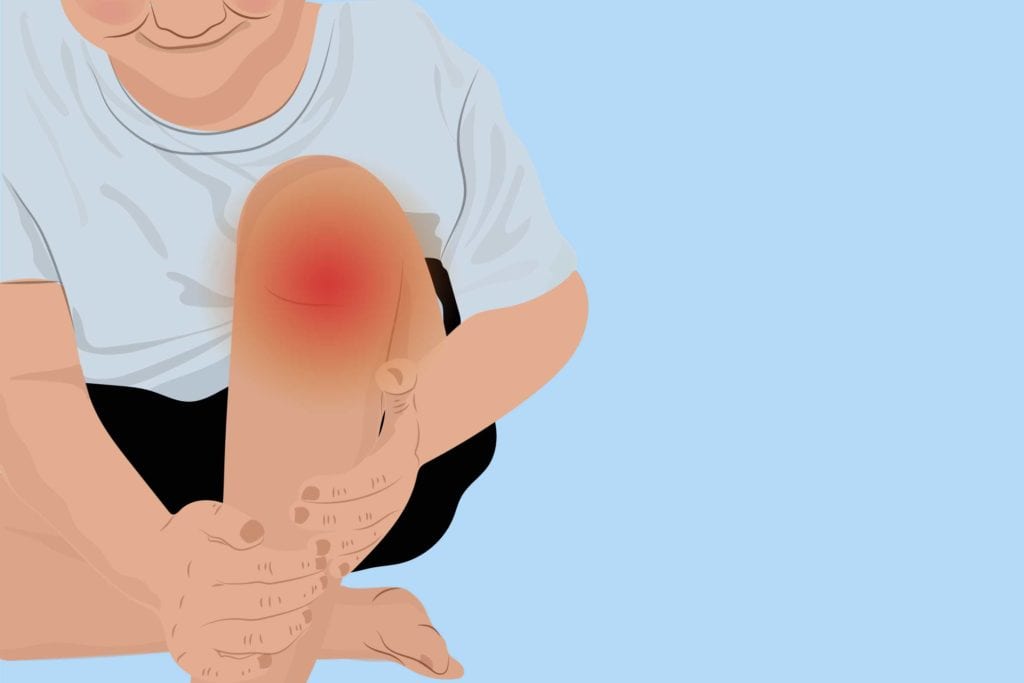

You expect your child to complain of aches and pains when they have a cold or the flu, or even after a particularly active day. But what if there’s no obvious cause for their pain?
In many cases, these symptoms may be due to growing pains, a benign issue that’s common in childhood. But occasionally, juvenile idiopathic arthritis (formerly known as juvenile rheumatoid arthritis), or JIA, may be the culprit, so it’s important for parents know how to tell growing pains apart from juvenile arthritis and when medical attention is in order.
Fortunately, there are notable differences between growing pains and juvenile idiopathic arthritis that are easy for parents to observe. Here, Nancy Pan, MD, a pediatric rheumatologist at Hospital for Special Surgery in New York City, answers the most commonly asked questions about these conditions.
How do the causes of growing pains and juvenile idiopathic arthritis differ?
You’d assume that childhood growing pains are related to growth spurts, but the truth is no one really knows why they occur.
“The thought was that the pain resulted from tendons and ligaments stretching as kids grew,” Dr. Pan says. “But if that were true, growing pains would strike in the teen years, which is when children grow the most.”
Juvenile idiopathic arthritis, on the other hand, has a known cause: It occurs when the body’s immune system attacks cells and tissues, which can lead to serious problems such as joint damage and growth problems. There are several types of JIA, but the most common one is called oligoarticular JIA. It affects up to four joints, typically the wrists or knees. Other types include polyarticular JIA (which affects five or more joints), systemic onset JIA, psoriatic arthritis, and spondyloarthritis.
Read more about the types of juvenile idiopathic arthritis in our JIA guidelines for parents.
Do growing pains and JIA affect the same parts of the body?
Growing pains almost always affect the legs, and unlike JIA, the discomfort typically isn’t localized to the joints.
“The pain is often in the calves, thighs, or the back of the knee,” Dr. Pan says. “If it’s coming from the knee joint, that can indicate juvenile idiopathic arthritis, particularly oligoarticular JIA.”
Knee pain is common in many types of juvenile idiopathic arthritis, but kids will likely complain of aches in other joints depending on the type of JIA they have. Those with spondyloarthritis most commonly experience back pain, for example, while polyarticular arthritis often affects the small joints of the fingers and hands.
Does the pattern of pain help distinguish between growing pains and JIA?
This is one of simplest ways to tell the two conditions apart. Growing pains strike late in the day, and the pain can be intense enough to wake children in the middle of the night. Kids with JIA experience the opposite: They feel worst in the morning, and experience a period of stiffness that can cause difficulty walking and make them appear clumsy.
The frequency of pain can also provide clues, says Dr. Pan. “Kids going through growing pains usually only experience them a couple of times a week over a period of a month or two. But if your child feels terrible most mornings — and this goes on for more than six weeks — that’s when we’d consider juvenile idiopathic arthritis,” she says.
Besides pain, what other symptoms do growing pains and JIA share?
Leg pain is often the only symptom of growing pains. “Some kids may experience stomachaches or headaches as well, which may be due to the stress the pain causes,” Dr. Pan says.
JIA, on the other hand, causes a variety of other symptoms you wouldn’t see with growing pains, such as swollen joints that feel warm and tender, fevers, fatigue, and rashes.
At what age are these conditions likely to appear?
Growing pains usually affect kids between the ages of 3 and 8, Dr. Pan says, whereas the age of onset of JIA varies depending on the type of arthritis. The most common one, oligoarticular arthritis, typically emerges around the same time growing pains do (toddlers to young school-age kids), while spondyloarthritis appears later, usually in the early teen years. Polyarticular arthritis is most commonly seen between the ages of 2 and 5 years and peaks again between 10 and 14 years. Systemic onset JIA is typically diagnosed between ages 3 and 5, while psoriatic JIA emerges around the age 2 to 3 years and peaks again in late childhood.
Keep Reading
Download our free parent and caregiver guidelines for caring for children with juvenile idiopathic arthritis here.





